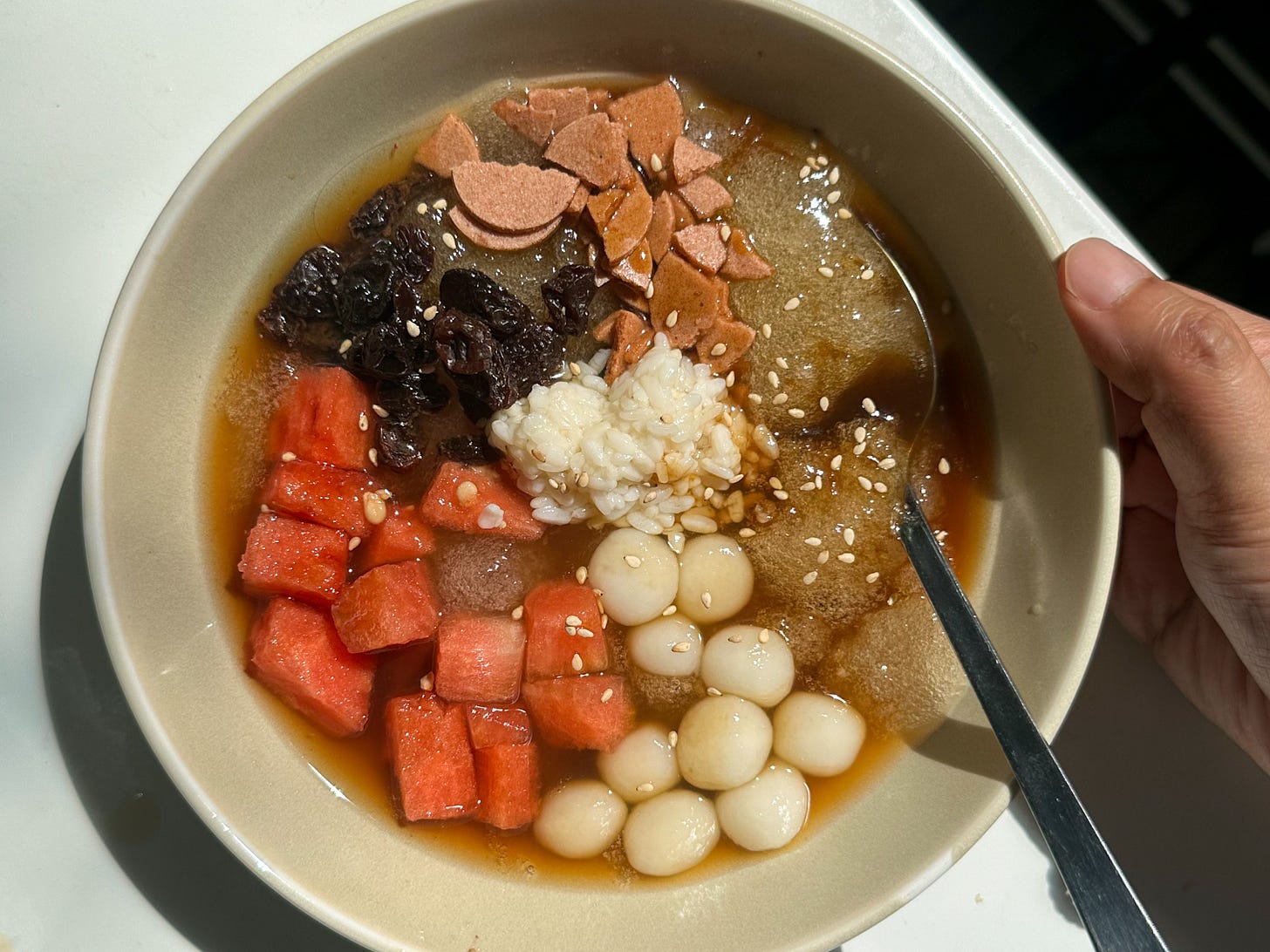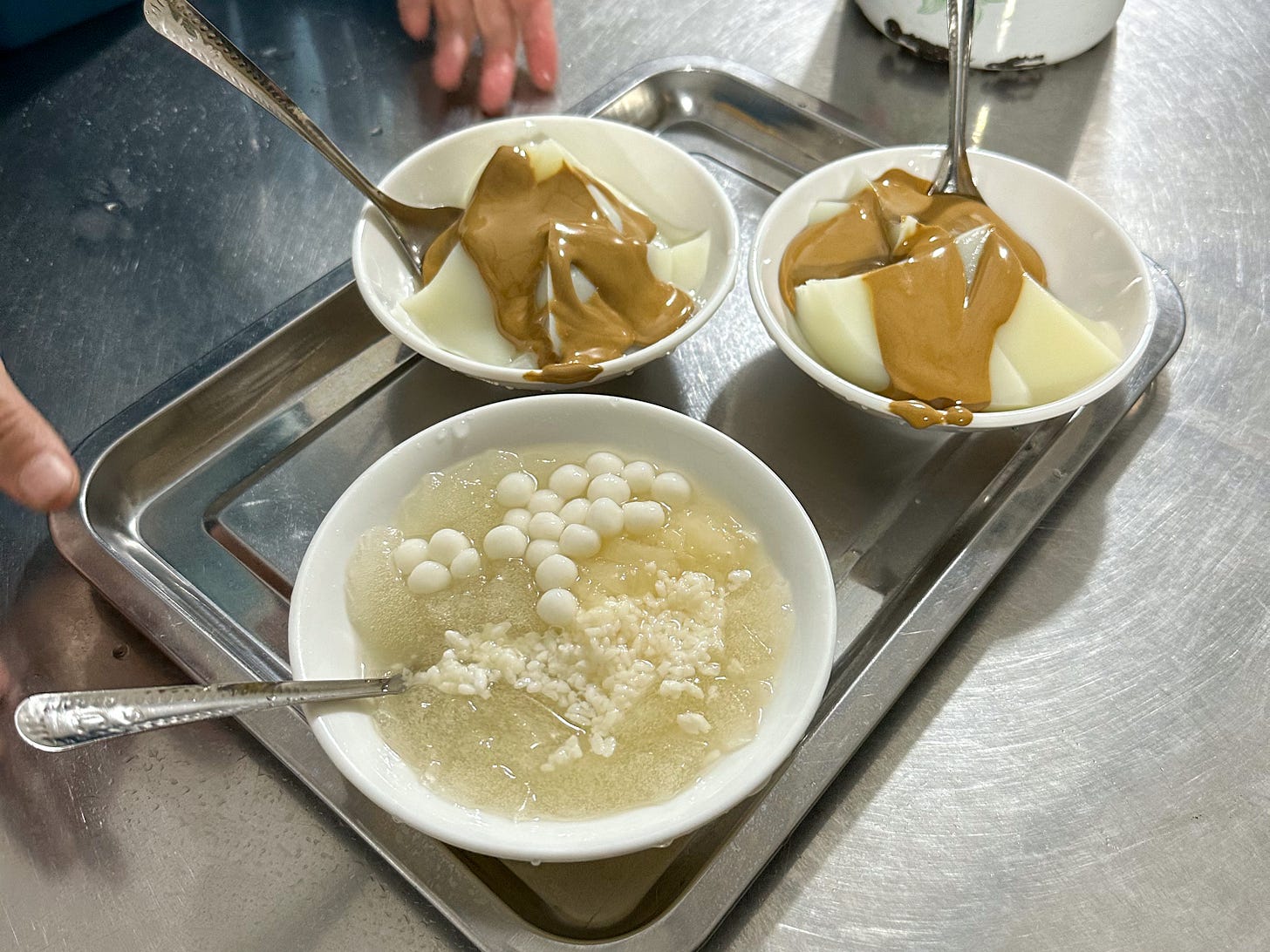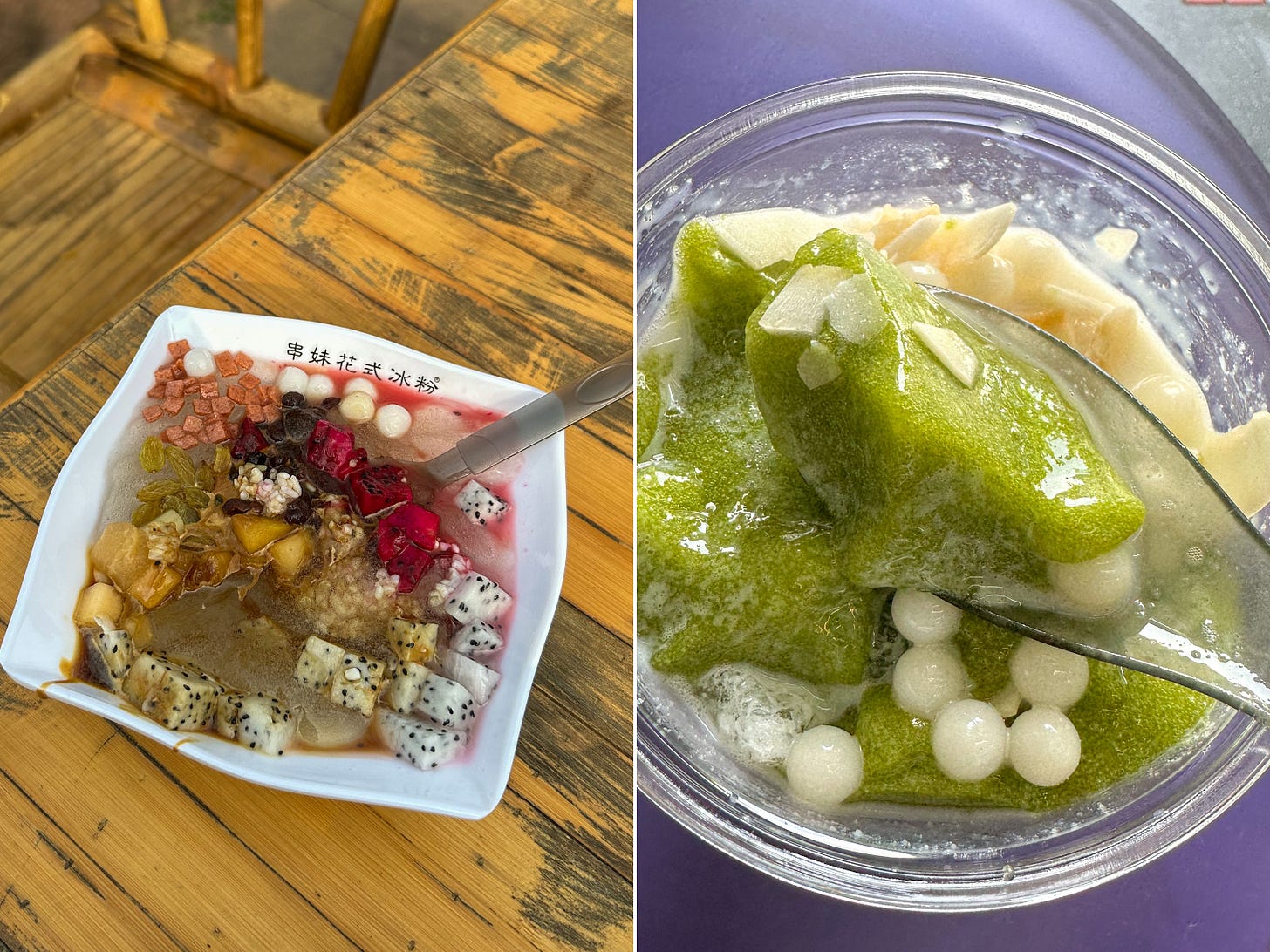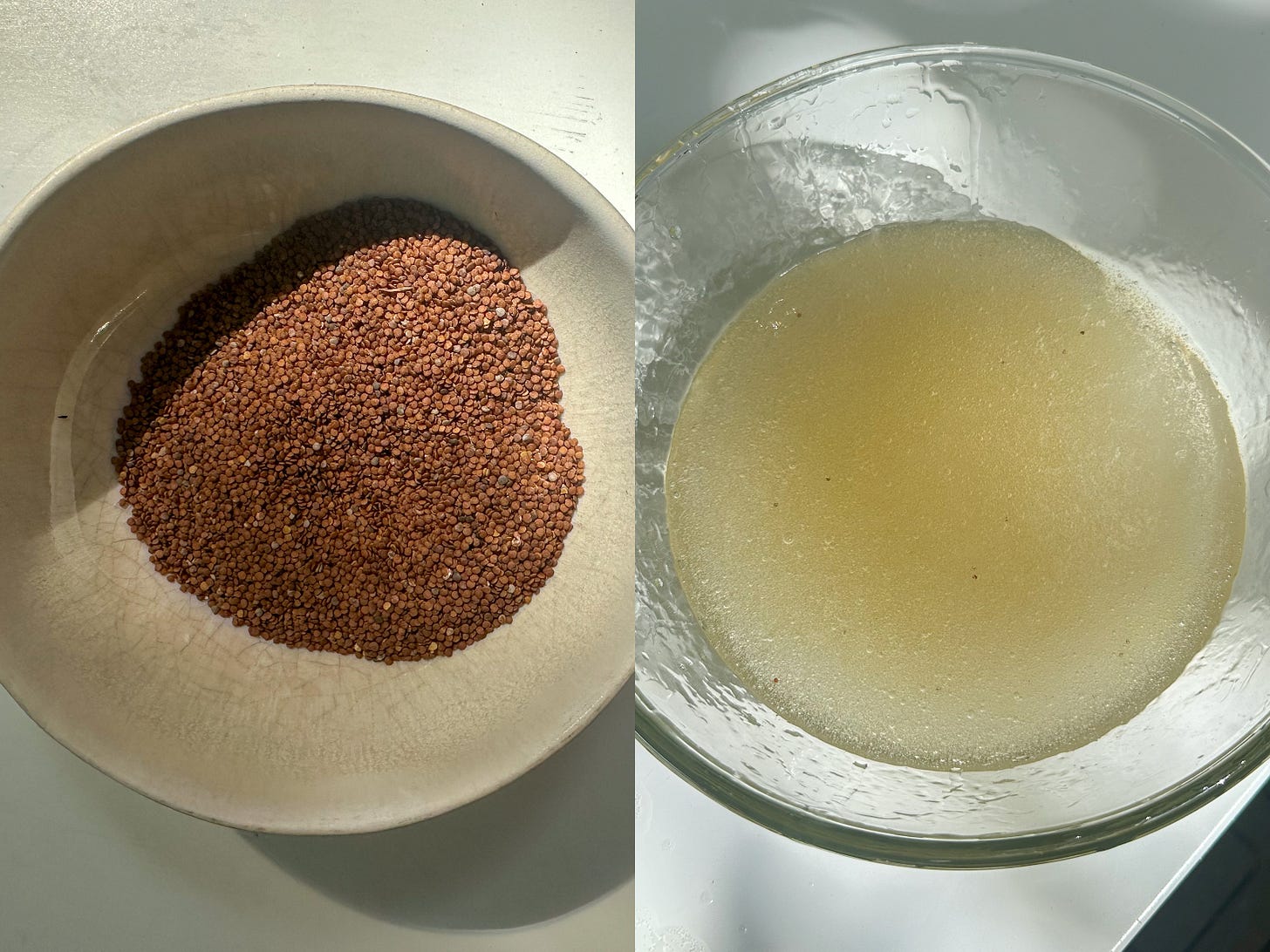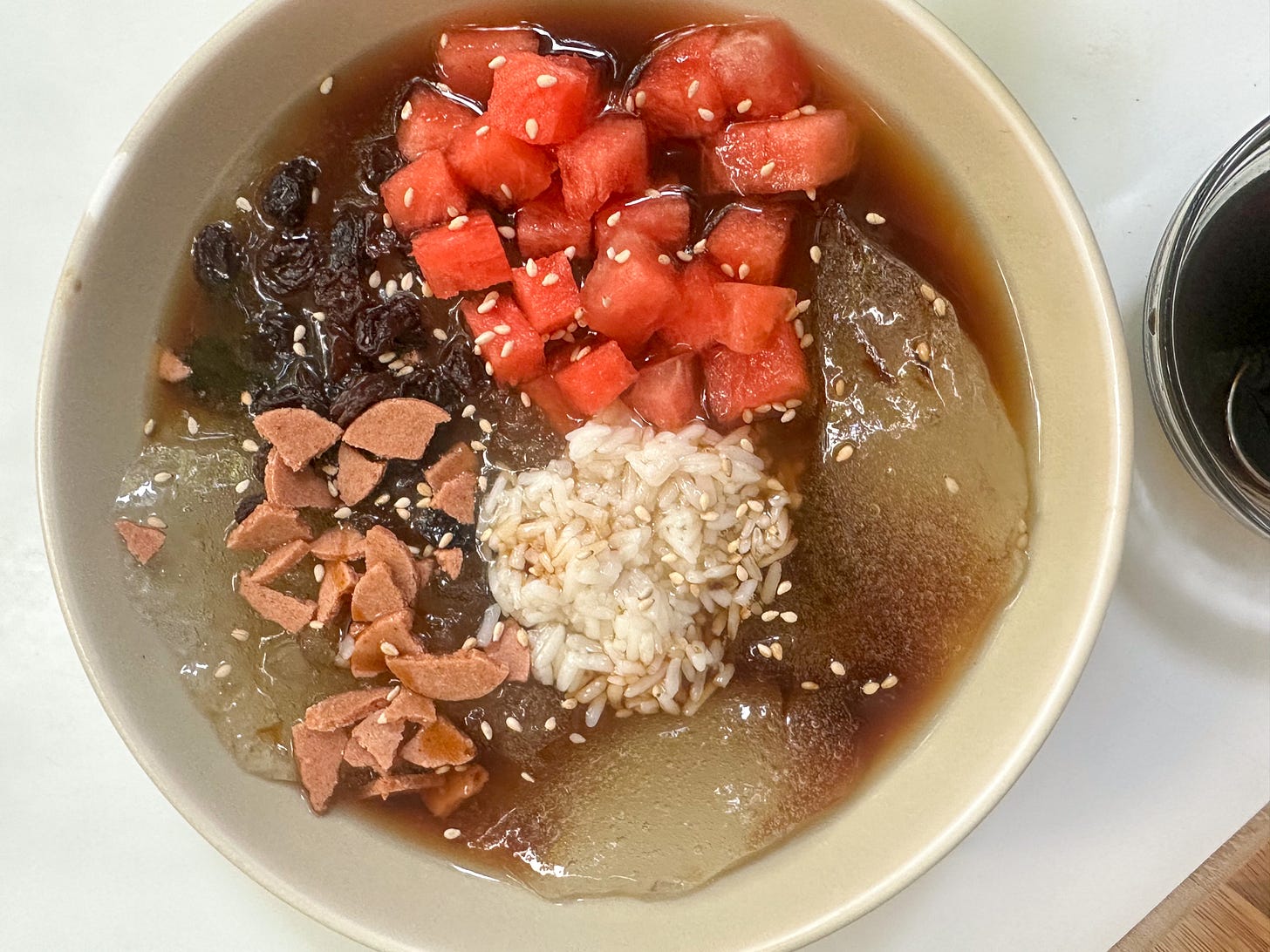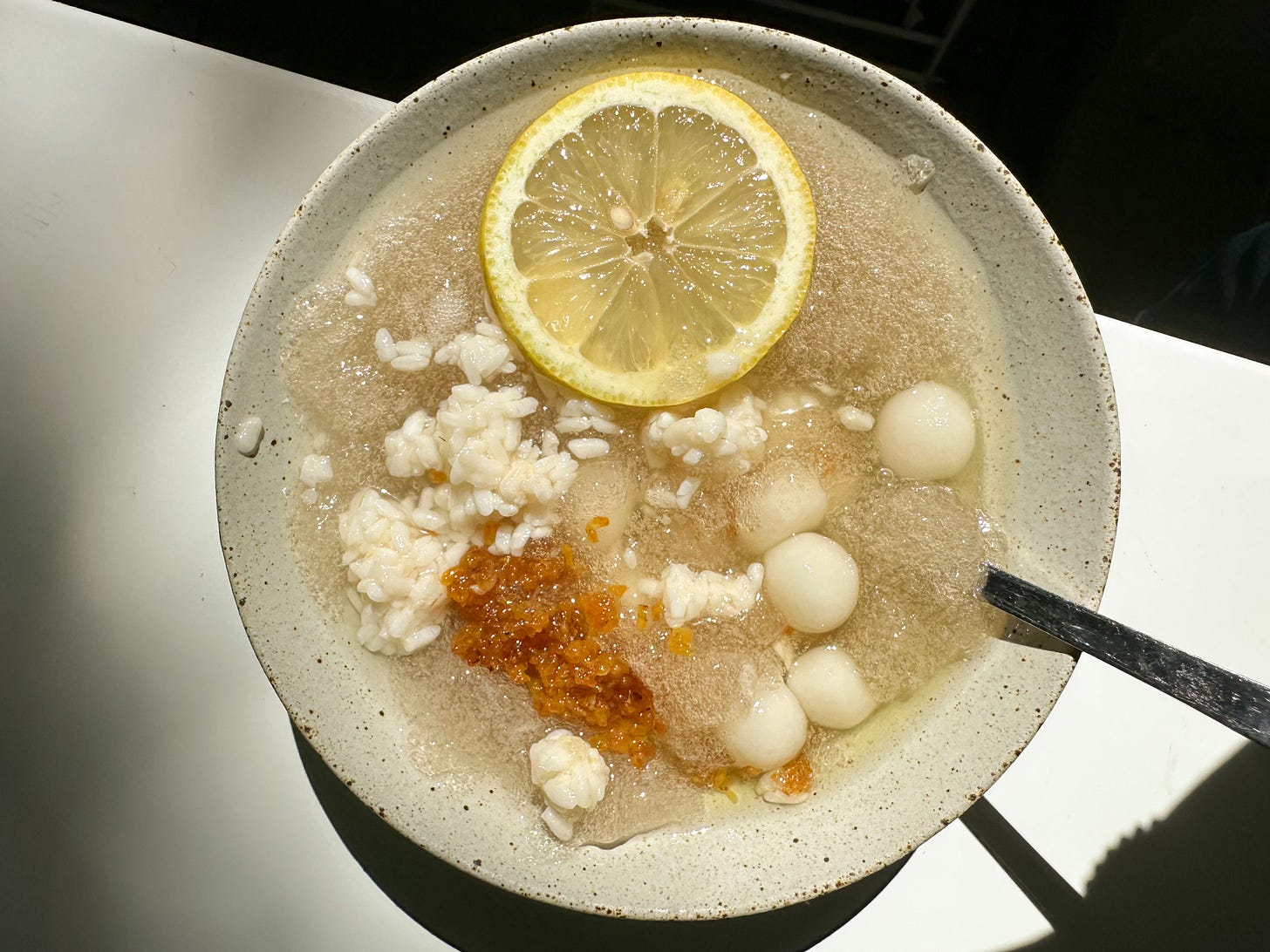Hi! This week we’re still making somethings sweet, one of my favorite summer desserts, bing fen, a perfect way to use the homemade sweet fermented rice (laozao) from last week and for the warmer days.
In Leshan, one of the trendiest food destinations in Sichuan, we visited a humble dessert shop last spring. The menu had only three or four items, which is often a good sign: chilled rice pudding (liang gao 凉糕) covered in a smooth dark sugar sesame paste, and handmade bing fen (冰粉), a translucent cold jelly dessert served with syrup, sweet fermented rice, and sticky rice balls. We sat on plastic stools among local primary school students who had just finished their day and were enjoying treats that were both rich and light, creamy and refreshing.
Bing fen, a lesser-known dessert outside of China, holds a special place in my summer memories. In the early 2000s, as a kid with working parents and no siblings, I would spend my days biking along the Jialing River with friends. When we were finally exhausted, we’d use our pocket money to buy bing fen from a street vendor. The "shop" was little more than a large commercial fridge, serving as a summer side hustle for a nearby lamp store. The jiggly jelly, topped with brown sugar syrup and crushed ice and brightly (and likely artificially) colored dried fruits, was slurped down in seconds.
Bing fen is still among the most popular Sichuan desserts, served at hotpot restaurants and noodle shops. You can even find specialized bing fen shops offering fusion flavors like pandan and coconut. For years living in Germany, I didn't think about making bing fen until last year when I saw instant powder on the shelf of my local Asian grocery store. This year, I finally got my hands on bing fen seeds and decided to make it from scratch.
What is bing fen?
Bing fen is believed to be originated from Pengzhou and Meishan areas near Chengdu around Qing Dynasty, and popularized in Sichuan and other southwestern regions. In Guizhou I had a delightful version with local rose jam.
Traditionally, bing fen is made by scrubbing seeds from a plant called shoofly (Nicandra physalodes). The seeds are placed in a cheesecloth and scrubbed in water for a few minutes until the pectin is released, making the water thick and slimy. Then, edible slaked lime water is added to help the jelly form. Many places now replace this labor-intensive process by using powdered bing fen made from konjac or seaweed jelly, which yields a transparent jelly. However, in recent years, more specialized handmade shops sell a version infused with air bubbles. This version is lighter but has more texture than the powdered variety.
The jelly itself doesn't have much flavor, but its wobbly and slippery texture makes it incredibly refreshing, especially when chilled. That's why it has become a classic dessert for hotpot meals.
Plant-based jellies have been consumed in China and other parts of the world for centuries (Jess Eng has wrote a piece about it). Some are made from starch, like liang fen (jelly noodles), while others are made from plants, such as divine tofu (神仙豆腐), which is made from the pectin of the Japanese premna tree leaves.
How to make bing fen jelly at home
From instant powder
Prepare the jelly as the package instructs by mixing one bag of powder with hot simmering water. Pour it into a container and let it cool to room temperature, then refrigerate for a few hours.
Where to find it: Available at Asian grocery stores or online, it's usually labeled as bing fen fen (冰粉粉) or bai liang fen (白凉粉).
From the seeds
Mix 5g of slaked lime in 300g of room-temperature water, and let it sit for 30 minutes. Pour out about 220g of the water, leaving the sediment at the bottom. Add 50g of seeds to a cheesecloth, tie the corners tightly, and rinse under cold water for a few seconds. Fill a large bowl with 1500g of water, then scrub the seeds as if washing clothes for 8 minutes until they are no longer slimy. The water will become foamy. Gradually add the slaked lime water while stirring. The mixture will become jammy; let it sit for a few hours.
Where to find it: The seeds are generally not available outside China, but you can try using a similar plant’s seeds, such as Aiyu jelly from Taiwan (Mei has a cool video about it).
2 Topping ideas
In China, bingfen is normally topped with some crushed ice, a syrup, some dried and fresh fruits. Some with sticky rice cakes and sweet fermented rice. If you don't want to make the syrup from scratch, you can use store-bought syrup (like agave or elderflower)
Here’re are two classic toppings:
Hongtang Bingfen (红糖冰粉) with brown sugar syrup
To make the sugar syrup, add 40g of dark brown sugar and 10g of light brown sugar to a small pan with 50g of water. Heat over medium heat, stirring until thick and sticky. Pour the syrup into a container with two lemon peels and 1 tablespoon of lemon juice, and cool completely. Chill in the fridge for a few hours. Top the bing fen with sweet fermented rice, hawthorn flakes, raisins, cubed watermelon, and crushed ice.
Sanxian Bingfen (柠檬三鲜冰粉) with sweet osmanthus syrup
To make the osmanthus syrup: Add 50g white sugar and 50g water to a pan, and simmer over medium for 6 minutes. Turn off the heat, and add 3g dried sweet osmanthus flowers, 2 tsp lemon juice, and a pinch of salt, and let sit for 4 minutes. Add lemon slices to cool it down. Top with cooked sticky rice balls, sweet fermented rice, and one slice of fresh lemon.




